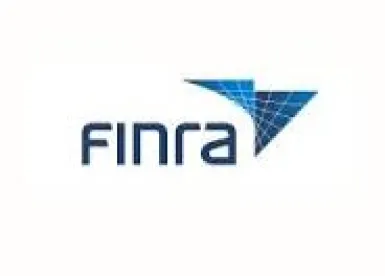FINRA explains the risk levels associated with communications regarding potential investment banking transactions: from low to high to “unmanageable.”
On May 27, the Financial Industry Regulatory Authority (FINRA) published long-expected guidance under NASD Rule 2711 concerning research conflicts of interest that can arise from communications with potential issuers of securities during the underwriter selection process. The guidance comes in the form of frequently asked questions (FAQ) and builds on several themes that emerged from FINRA’s settlements at the end of last year with 10 member firms concerning a planned initial public offering (IPO) of a large national retailer (the Settlements).[1] The Settlements addressed communications that involved investment bankers, research analysts, private-equity sponsors, and company representatives during the period of time when the retailer was considering which investment banks to hire for an IPO.[2] The FAQ provides further insight into FINRA’s views of the risks involved with the different types of communications that occur between firms and issuers during the various phases of the solicitation of investment banking business.
This article highlights the risk levels that FINRA assigns to communications with potential issuers during three discrete phases of the underwriter selection process:
(1) The pre-IPO period
(2) The solicitation period
(3) The post-mandate period after the banking business has been awarded
As described by FINRA in the FAQ, the risk levels of different types of communications during those time periods range from low to high to “unmanageable.”
COMMUNICATIONS DURING THE SOLICITATION PERIOD
Since the “tech wreck” market collapse of the early 2000s and the Global Research Settlements that followed, NASD (now FINRA) has had in place rules to prohibit research analysts from “pitching” or “soliciting” investment banking business.[3] The Rules also prohibit firms from promising favorable research as an inducement for business from an issuer of securities.[4] For more than a dozen years, firms acted within the seemingly clear boundaries of the Rules. However, with the Settlements, FINRA, as a matter of first impression, expanded the zone of risk for firms that communicate with issuers during the so-called “solicitation period”—a period that is not defined in any rule and was never previously mentioned in relation to Rule 2711. According to FINRA, the risks of violating the no-pitching and no-promising rules are “significantly elevated” during the solicitation period when issuers are choosing which investment banks they want to hire.
When Does the Solicitation Period Begin?
The FAQ explains that the “solicitation period” begins when an issuer “makes known” that it intends to proceed with an IPO.[5] This typically occurs when an issuer seeks requests for proposal or other communications that expressly indicate an intention to proceed with an IPO.[6] Notably, the FAQ does not state that the issuer actually must make its intentions known to a particular firm or a particular research analyst within a firm. Instead, the FAQ advises that an analyst who has “indicia” that the issuer may be considering an IPO—either from the type of information the issuer is seeking or from “other reliable sources”—should consult with legal and compliance personnel to make a reasonable determination about whether the solicitation period has, in fact, begun. This approach seems to avoid situations where knowledge of an issuer’s intentions could be imputed to a firm or particular analyst based solely on general market awareness without any actual or reasonable knowledge on the part of the firm or analyst.
When Does the Solicitation Period End?
The FAQ states that the solicitation period ends when there is a “bona fide” awarding of an underwriting mandate or rejection of a firm for an investment banking role.[7] The inclusion of the bona fide modifier to the mandate, as well as other guidance from the FAQ, means that the “mandate date” is not the absolute end of the solicitation period. For example, after an investment banking mandate has been awarded to a firm, if an issuer indicates that the firm’s role in the underwriting or the economics of the deal for that firm will be based on the highest valuation given by the firm’s research analyst, then the mandate would be ineffective and the solicitation period standards would continue to apply to that firm.[8] Similarly, the FAQ makes clear that there can be different end points of the solicitation period for different firms where deal participants are determined on a rolling basis.[9]
What Can Analysts Say During the Solicitation Period?
FINRA considers that communications with an issuer during a solicitation period “carry significantly elevated risk” of a violation of Rule 2711.[10] This means that positive statements about an issuer create a high risk that analysts will promise favorable research.[11] This also means that there are heightened risks when a research analyst shares with an issuer, directly or through another firm, his or her views or valuations about the issuer during this period.[12]
What Can an Analyst Do During the Solicitation Period?
The FAQ says that bona fide vetting by an analyst or due diligence communications with issuers have a lower risk of violating the Rules during the solicitation period. As the FAQ explains, these are communications made for purposes of obtaining information from an issuer in furtherance of the analyst’s research function. Although vetting and due diligence communications are classified as low-risk, they are not no-risk. The FAQ cautions that such communications “must [still] be managed carefully” to avoid the risk of constituting an impermissible offer of favorable research coverage.[13]
At the other end of the risk spectrum, the FAQ warns that in situations where an issuer has said—either overtly or implicitly—that the selection of underwriters will be based on the views of a research analyst (including views on valuation), there is an “unmanageable risk” of violating Rule 2711.[14]
Do the Solicitation Period Risks Apply Only to Communications That Are Requested by the Issuer?
FINRA’s answer is no. Risk management considerations exist during the solicitation period regardless of whether the company or an analyst initiates the communication, and regardless of the setting of the communication. So, the solicitation period risks apply to communications that occur between analysts and issuers, for example, in the confines of a meeting room, as well as at a widely attended industry conference.[15] Context is, of course, relevant.[16] The FAQ explains, by way of example, that an analyst should not have to refrain from sharing his or her previously published industry views if he or she is presenting at a previously scheduled conference that an issuer in the solicitation period happens to attend.[17] Similarly, during the solicitation period, the FAQ states that investment bankers would be allowed to provide an issuer with copies of the analyst’s previously published research reports, provided that the request came from the issuer.[18] However, the investment bankers could not provide those reports unsolicited, nor could they give only a hand-picked selection of the reports or offer comments on the reports without elevating the risks of impermissible conduct.[19]
COMMUNICATIONS DURING THE PRE-IPO PERIOD
The pre-IPO period is the period prior to the solicitation period (i.e., before the issuer makes known that it intends to proceed with an IPO). Typically, the pre-IPO period ends with a request for proposal from an issuer or other communication that expressly indicates the issuer’s intent to proceed with an IPO.[20] FINRA believes that the risk of violating NASD Rule 2711(c)(4) and (e) is lower during the pre-IPO period.[21]
The FAQ states that pre-IPO period communications “could include, for example, discussions regarding the issuer’s competitors, the IPO market and an issuer’s readiness for an offering.”[22] FINRA cautions, however, that the pre-IPO period is not a “safe harbor” for all analyst communications.[23] For example, an analyst answering questions from an issuer about how he or she would value or position the issuer carries an increased risk, even during the pre-IPO period.[24]
FINRA also warns that questions from an issuer during the pre-IPO period may indicate that the issuer has already determined to proceed with an IPO, thus triggering the “solicitation period” standards.[25] In light of this concern, FINRA states that “Firm’s policies and procedures should address circumstances where issuer statements or questions suggest that an IPO determination has been made, including consultation with legal and compliance personnel.”[26]
COMMUNICATIONS DURING THE POST-MANDATE PERIOD
The post-mandate period is the period following the solicitation period, after the issuer has made a bona fide award of the underwriting mandates. Like the pre-IPO period, FINRA believes that the risks associated with analyst communications during this time period are lower than during the solicitation period.
According to the FAQ, “it would generally be appropriate for an analyst to communicate with the issuer his or her views about valuation, pricing and structuring of the transaction [during the post-mandate period], even if the valuation or pricing assessment is positive.”[27] However, as in the pre-IPO period, there is no safe harbor during the post-mandate period.[28] In particular, FINRA warns of instances where an issuer “suggests the final roles or economics will be based on the highest valuation given by a firm’s research analyst” and states that member firm policies and procedures should be updated to address these situations.[29]
REPUDIATION OF IMPROPER REQUESTS FROM ISSUERS
The FAQ acknowledges that FINRA lacks jurisdiction to police the conduct of many issuers and their representatives who may ask for information that firms are not permitted to provide. When an improper request is made, FINRA expects firms to repudiate it. Building on the FINRA guidance in Regulatory Notice 11-41,[30] the FAQ emphasizes that firms “must repudiate” improper requests from issuers for valuation information that reflects the analyst’s views.[31] Specifically, the FAQ states that “where an issuer creates an improper expectation that a firm’s valuation will reflect a research analyst’s view or analyst alignment with the investment bankers’ view, a firm that wishes to continue to compete for a role in the offering must repudiate the overture and explain that any valuation provided represents the bankers’ views only and that the firm cannot make any representations about the views of the research analyst.”[32] Absent such repudiation, a firm’s bankers may not convey valuation information to an issuer. In addition, the FAQ makes clear that the repudiation should be documented in writing.[33]
EMERGING GROWTH COMPANIES
The FAQ also briefly touches on analyst communications with emerging growth companies (EGCs) during the solicitation period.[34] Although some analysts may be permitted to attend a pitch meeting between the firm’s investment bankers and an EGC, the FAQ suggests that analysts are not allowed to share their views and valuations during such meetings.[35] Instead, the FAQ states that the FINRA Rules and the FAQ continue to apply to such meetings, “other than to allow attendance by a research analyst at a pitch meeting for an EGC IPO.”[36]
CONDUCT BY FIRMS WHEN THEY ARE ISSUERS OR ADVISERS TO ISSUERS
Although the FAQ acknowledges that NASD Rule 2711 does not apply specifically to issuers, they suggest that a member firm may be held accountable under the rule when it acts as an issuer of securities or serves as an adviser to an issuer. Specifically, the FAQ states that “it could be inconsistent with just and equitable principles of trade for a member acting in those capacities to request, induce or pressure another member to engage in conduct that, if acquiesced to, would result in a violation of Rule 2711.”[37] Accordingly, a member firm should not assume that the prohibitions contained in Rule 2711 do not apply to it when it is acting as a securities issuer or an adviser to an offering. Instead, the FAQ suggests that member firms may be held accountable under the Rules when acting in these roles.
[1]. On December 11, 2014, FINRA announced that it had fined 10 firms a total of $43.5 million for allowing their equity research analysts to solicit investment banking business and for offering favorable research coverage in connection with the 2010 planned initial public offering of the retailer. See FINRA News Release (Dec. 11, 2014).
[2]. In an ironic twist of fate, despite the competition for investment banking business, the IPO never went forward, and the company remains privately held.
[3]. See generally NASD Rule 2711 and NYSE Rule 472 (the Rules). For example, NASD Rule 2711(c)(4) provides that “No research analyst may participate in efforts to solicit investment banking business. Accordingly, no research analyst may, among other things, participate in any ‘pitches’ for investment banking business to prospective investment banking clients, or have other communications with companies for the purpose of soliciting investment banking business.” The Rules are subject to an exception for emerging growth companies.
[4]. NASD Rule 2711(e) provides that “No member may directly or indirectly offer favorable research, a specific rating or a specific price target, or threaten to change research, a rating or a price target, to a company as consideration or inducement for the receipt of business or compensation.”
[5] See FAQ No. 1.
[6] Id.
[7] See FAQ No. 1
[8] See FAQ No. 3.
[9] See FAQ No. 1.
[10] Id.
[11] Id.
[12] Id.
[13] See FAQ No. 1.
[14] Id.
[15] See FAQ No. 1.
[16] Id. (“Context is relevant to the degree of attendant risk.”).
[17] Id.
[18] See FAQ No. 6
[19] Id.
[20] See FAQ No. 1.
[21] See FAQ No. 2.
[22] Id.
[23] Id.
[24] Id.
[25] Id.
[26] Id.
[27] See FAQ No. 3.
[28] Id.
[29] Id.
[30] See FINRA Regulatory Notice 11-41 (Sept. 2011).
[31] See FAQ No. 4.
[32] Id.
[33] Id.
[34] An EGC is defined as “an issuer that had total annual gross revenues of less than $1,000,000,000 . . . during its most recently completed fiscal year.” See 15 U.S.C. § 78c(a)(80); see also NASD Rule 2711 (a)(11).
[35] See FAQ No. 5.
[36] Id.
[37] See FAQ No. 7.




 />i
/>i

